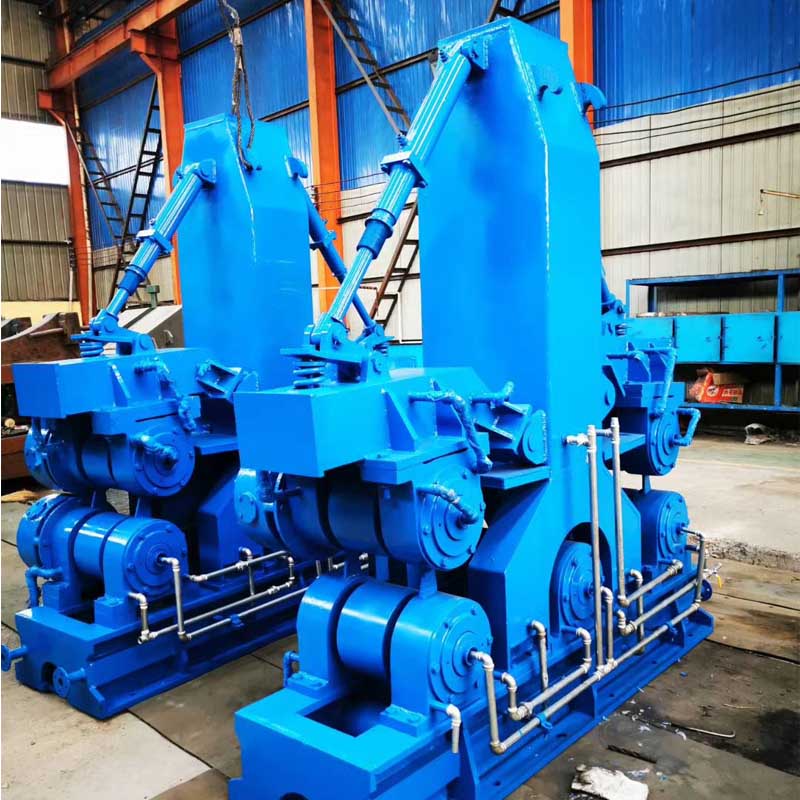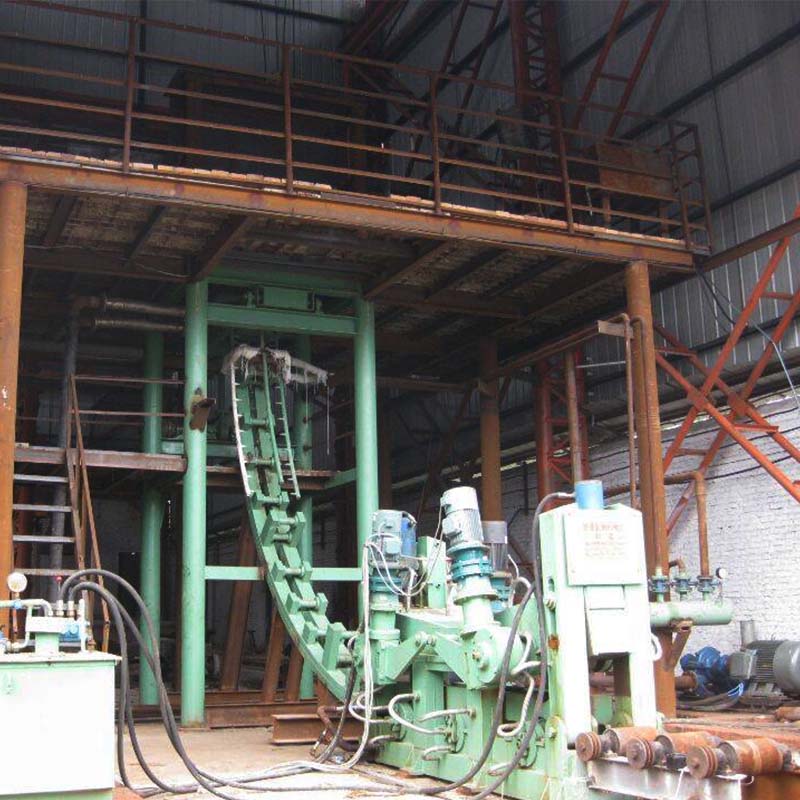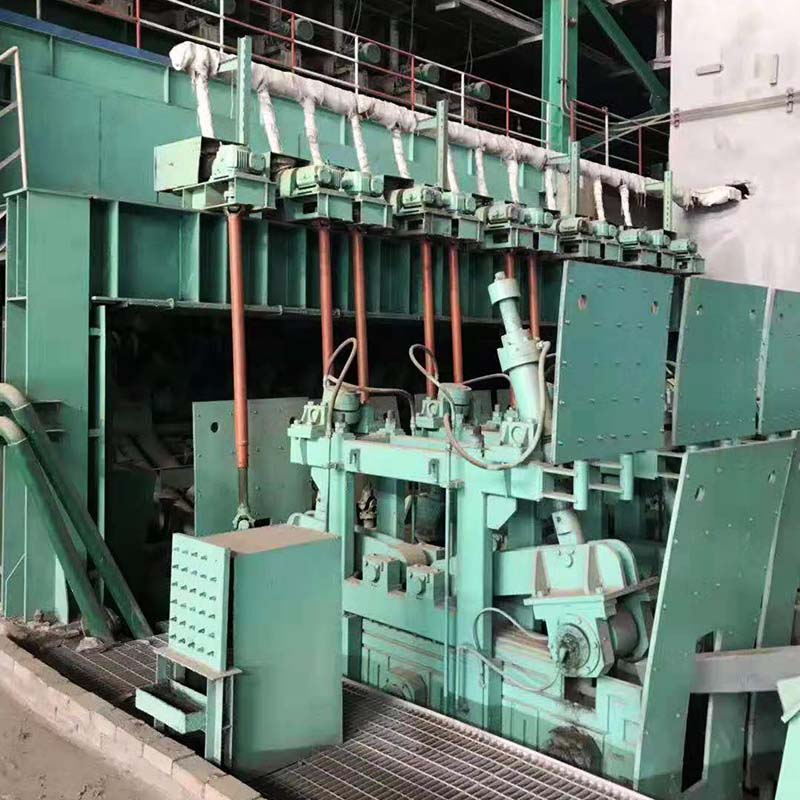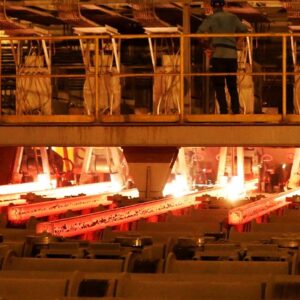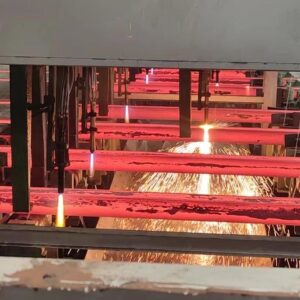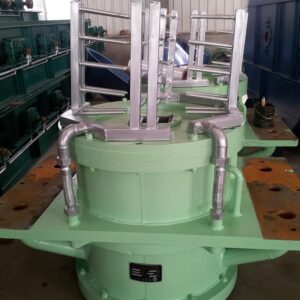Description
Withdrawal Straightener
Continuous casting slab withdrawal straightener refers to the process of pulling the continuous casting slab out of the crystallizer of the arc continuous casting machine at a certain casting speed and straightening it.
For the arc continuous casting machine, straightening must be carried out after the billet is drawn out. The two processes of billet drawing and straightening are usually completed in one unit, so it is called the billet withdrawal straightener (Withdrawal Straightener for short).
The billet withdrawal straightener in the continuous casting machine can be divided into one-point straightener, multi-point straightener, continuous straightener, and compression straightener according to the straightening method.
The continuous casting billet withdrawal straightening machine is set up in the continuous casting equipment which continuously pulls out and straightens the billet after the billet guide and secondary cooling device. Another important function of the tension straightener is to convey the guide spindle rod.
The main function of the withdrawal straightener is to pull the billet through the secondary cooling section and straighten it gradually. In preparation for casting, the billet roll clamps the lead rod and feeds it into the crystallizer. During casting, the billet is pulled out for stripping and straightening by the tangential roll and straightening roll.
During pouring, the withdrawal straightener pulls out the arc casting billet continuously and straightens it. When feeding the ingot, the straightening roll reverses, and the ingot head is fed into the crystallizer.
The continuous straightening and straightening machine with a single frame and five rolls can produce continuous uniform deformation of the casting billet with a low and stable deformation rate, overcome the peak value of straightening deformation rate, greatly improve the surface and internal crack defects of the casting billet, and is suitable for the production of high speed and large section casting billet.
The tension straightener consists of a driving roll, driven roll, driving device, frame structure, water cooling system, water cooling protective wall, etc.
The withdrawal straightening machine adopts continuous progressive straightening technology with low straightening stress.
Parameter
|
Main Parameter
|
||
|
Structural Style
|
Combined Frame Withdrawal Straightener, Independent Frame Withdrawal Straightener
|
|
|
Applicable Section Scope
|
Combined Frame Withdrawal Straightener
|
100×100~200×250;Ø120~Ø220
|
|
Independent Frame Withdrawal Straightener
|
Square Billet, Round Billet
|
|
|
Casting Speed Range
|
0.5~5.5m/min
|
|
The technical requirements for the withdrawal straightener are as follows:
(1) It can overcome the resistance of the crystallizer and the secondary cooling device to the billet, pull the billet out and feed the ingot rod into the lower part of the crystallizer.
(2) The drawing speed can be adjusted to meet the different requirements of different steel grades and different casting slab sections for drawing speed, while the speed of ingot rod introduction needs to be faster.
(3) There must be enough openings between the upper and lower rolls of the straightening roll and they can be adjusted to produce billets with different sections. When using a rigid spindle rod, the spindle rod shall be allowed to pass through.
(4) The upper roll should have sufficient pressing force to meet the requirements of billet friction and straightening the billet. Pressure must be adjustable to suit the requirements of different sections. To prevent casting slab defects caused by excessive pressure on the casting slab, and when the ingot bar is transited from the ingot bar to the casting slab at the start of casting, the pressure should change rapidly to prevent the high-temperature casting slab from being deformed by pressing.
With the development of high-efficiency continuous casting technology, many casters employ multi-point straightening technology. Due to the high drawing speed in high-efficiency continuous casting and the long liquid core length of the billet, straightening with the liquid core is required.
During liquid-phase straightening, the strength and allowable deformation rate of the billet shell at the interface of the two-phase region are extremely low.
Multi-point straightening can distribute the strain which is centralized in one point to several points, control the straightening deformation rate within the allowable range, and prevent the possibility of internal cracking of the casting billet.
Customized Continuous Caster
We can design and manufacture the continuous caster according to the user’s steelmaking capacity, billet size, steel grade, and user site conditions. It can also be matched for manufacturers who already have continuous casting equipment.
Custom Range
Arc radius of casting machine: R2.5-10m
Billet species: square billet, round billet, slab, special-shaped billet
Continuous casting billet material: low carbon steel, low carbon alloy steel
Design production capacity: first-class 100,000 tons, second-class second-class 200,000 tons, third-class third-class 300,000 tons
Service
We can provide foundation layout and layout drawings
We will send engineers to your factory to install and debug machines and provide reliable after-sales service.
Competitive price and excellent quality
Our machines are easy to operate and maintain
Less investment
Stable performance
Products can be customized according to different needs
Production capacity can be adjusted according to customer requirements
Low energy consumption

